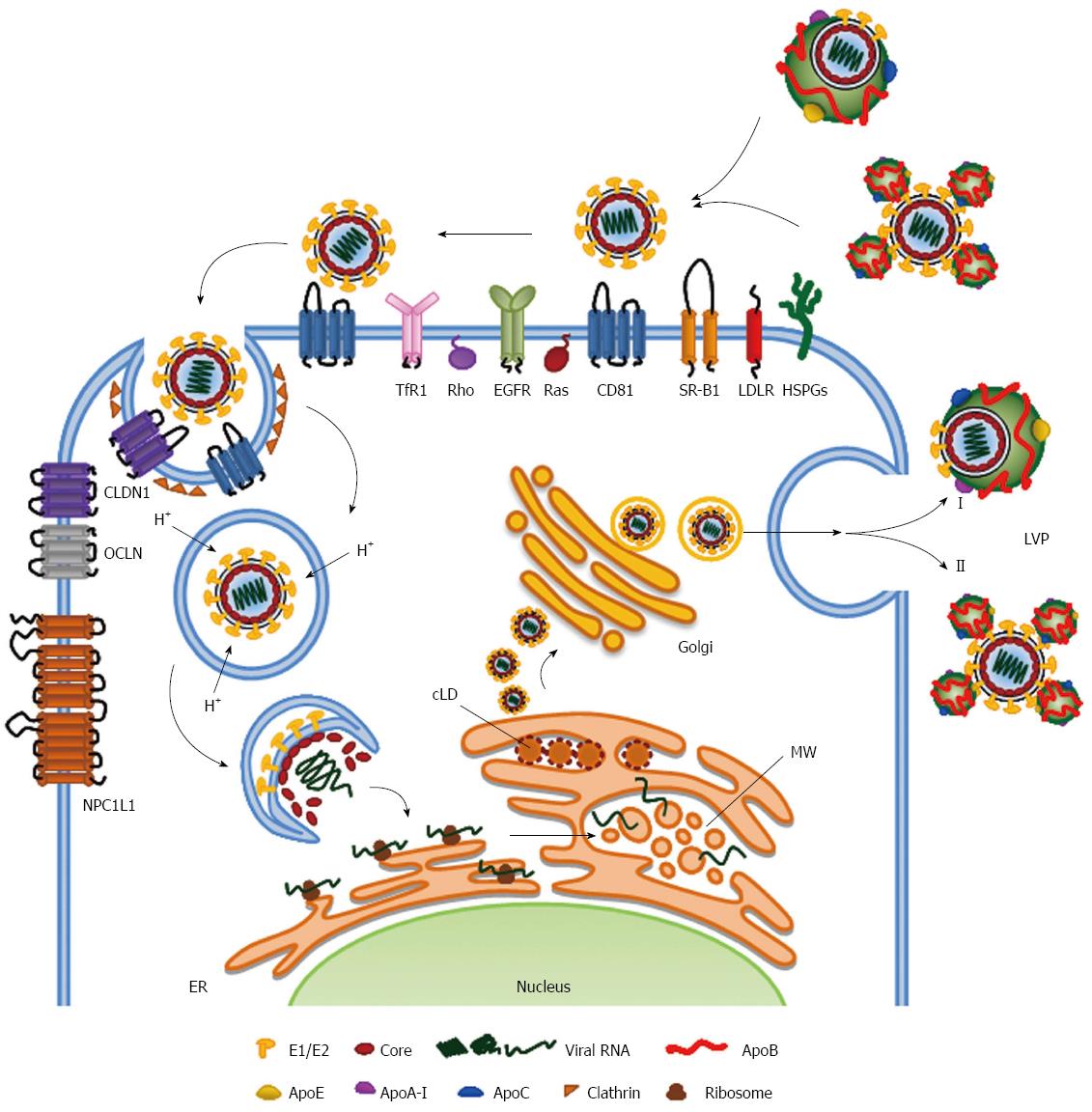Copyright
©The Author(s) 2016.
World J Gastroenterol. Feb 14, 2016; 22(6): 1953-1965
Published online Feb 14, 2016. doi: 10.3748/wjg.v22.i6.1953
Published online Feb 14, 2016. doi: 10.3748/wjg.v22.i6.1953
Figure 1 Hepatitis C virus life cycle.
Following the initial binding of hepatitis C virus (HCV) to glycosaminoglycans present on heparan sulfate proteoglycans (HSPGs), to low-density lipoprotein receptor (LDLR), to scavenger receptor class B type 1 (SR-BI) and to CD81, the viral particles utilize different proteins, such as epidermal growth factor receptor (EGFR), Ras, Rho ephrin receptor A2 (EphA2), transferrin receptor 1 (TfR1), cholesterol transporter Niemann-Pick C1-like 1 (NPC1L1), claudin-1 (CLDN1) and occludin (OCLN), for entering into the cell by clathrin-mediated endocytosis. After the pH-dependent fusion between viral and target membranes, HCV RNA is released into the cytosol and translated at the rough ER, giving rise to a polyprotein that is then cleaved into mature viral proteins. Viral proteins together with host cell factors, induce the formation of the membranous web (MW), composed by vesicles as well as cytosolic lipid droplets (cLD) where the RNA replication occurs. Assembly of HCV particles probably starts in close proximity to the ER and lipid droplets. The viral envelope is acquired by budding into the ER at sites of lipoprotein synthesis. HCV particles are thought to be released via the constitutive secretory pathway in association with components of lipoproteins in order to produce a mature form of lipoviroparticles (LVP). This lipidation might occur either during budding (hybrid particle model; I) or during egress via interaction between the virion and lipoproteins (dual-particle model; II).
- Citation: Grassi G, Di Caprio G, Fimia GM, Ippolito G, Tripodi M, Alonzi T. Hepatitis C virus relies on lipoproteins for its life cycle. World J Gastroenterol 2016; 22(6): 1953-1965
- URL: https://www.wjgnet.com/1007-9327/full/v22/i6/1953.htm
- DOI: https://dx.doi.org/10.3748/wjg.v22.i6.1953









